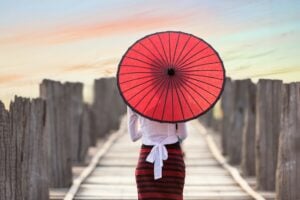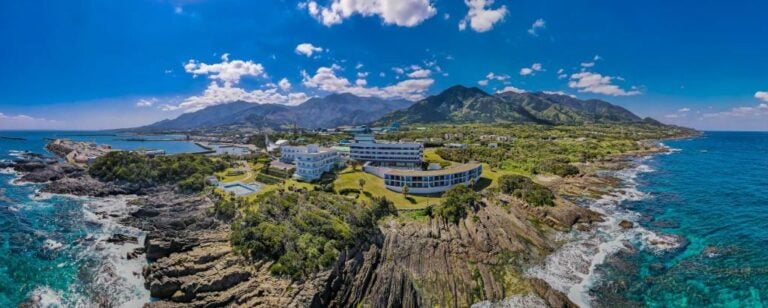
I’ve lived in Japan for 4 years and, in my opinion, the best trips you can do in this country are to the remote islands of Japan. Japan consists of over 14,000 islands, so there is a lot to choose from. In this article, I’ll be telling you about 4 islands in particular that I’ve visited, and fallen in love with, during my time in Japan.
Yakushima, Kagoshima Prefecture
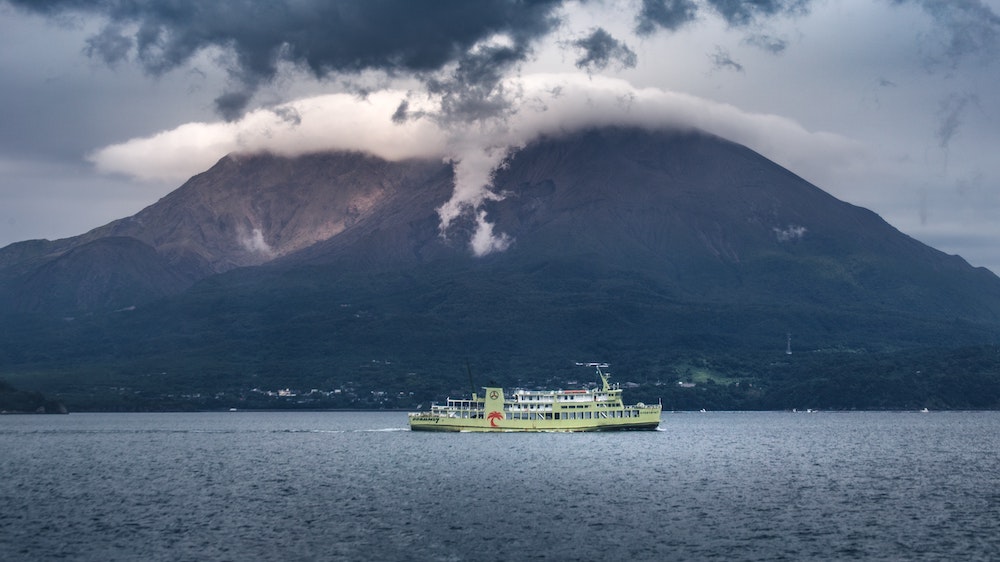
Nestled in the southern part of Japan, Yakushima beckons adventurous souls to its lush and mystical realm. To reach this natural wonderland from popular Japanese destinations such as Tokyo or Osaka, you can take a domestic flight to Kagoshima, followed by a ferry ride to the island. The flights to Kagoshima will set you back between 10 and 20,000 yen. You can also fly into Fukuoka and get the Shinkansen to Kagoshima. A return ticket for that will cost about 20,000 yen.
There are a couple of options for the ferry from Kagoshima to Yakushima itself. The high-speed ferry takes between 2-3 hours and will cost about 22,000 yen for a return ticket. The slower ferry takes about 4 hours and will set you back around 10,000 yen for a return ticket. All in all, getting to Yakushima will cost a fair chunk of money. But I guarantee it’ll be absolutely worth it!
Once on Yakushima, prepare to be enchanted by its captivating offerings. Trek through ancient cedar forests, where towering moss-covered trees, some over a thousand years old, create a serene and ethereal atmosphere. Yakushima is famously the inspiration for Princess Mononoke, and when you’re strolling through the dense forest, it’s easy to see why. If you’re feeling brave, you can do the 12-hour round hike to the Jomon Sugi, a revered icon standing tall for thousands of years. When I went, the Jomon sugi was covered in a thick layer of mist, which only added to the mystical atmosphere.
Once you’ve done your hike, you can drive to marvel at the island’s misty waterfalls and crystal-clear rivers. When I went, I kayaked up the Anbo river. I’ve never felt so much like I’m in Jurassic World.
Yakushima has a natural onsen that’s formed on the coast at low tide. For you hot-spring lovers, this is a must-visit. I haven’t found an onsen like it since.
Whether you choose to embark on a multi-day hiking adventure or opt for shorter trails, Yakushima promises a profound connection with nature and an unforgettable experience for nature enthusiasts and avid adventurers alike. It’s a magical place and I can’t recommend it enough.
Naoshima, Kagawa Prefecture
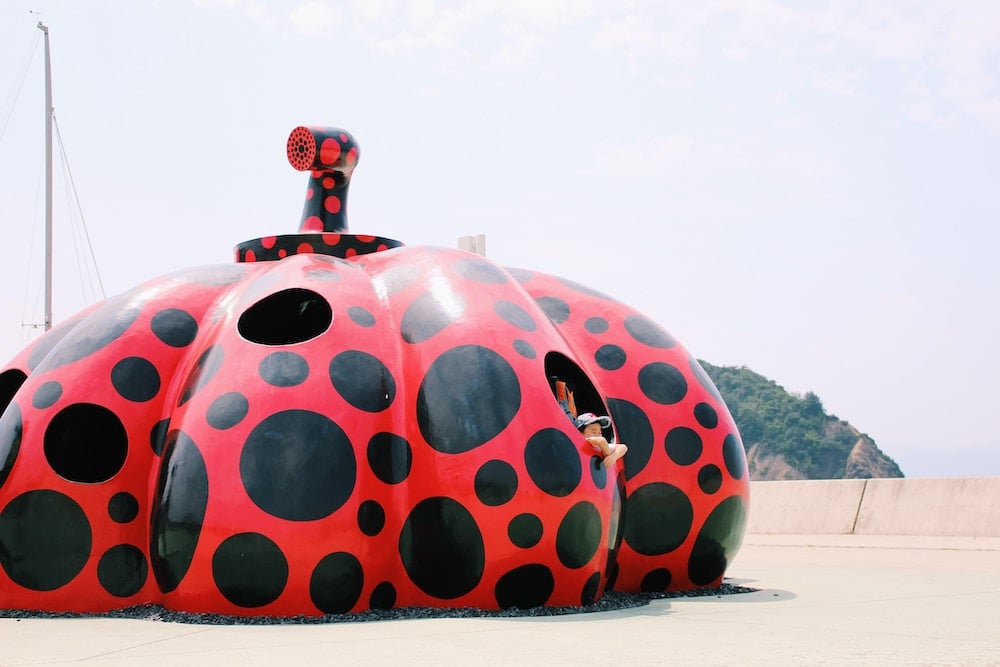
Nestled in the Seto Inland Sea, Naoshima, known as the “art island” of Japan, is a haven for art enthusiasts and cultural explorers. To reach this artistic paradise from popular Japanese destinations such as Tokyo or Osaka, travellers can take a bullet train to Okayama, followed by a scenic ferry ride to Naoshima.
When you step foot on the island, you’ll be immersed in a world where art and nature coexist harmoniously. You’ll be met by one of Yayoi Kusama’s famous pumpkins. I rented an electric bike for a couple of thousand yen when I went, and that was more than sufficient to get around the island.
There are so many museums and exhibitions to explore I’d need hours to tell you about them. Some of the more famous ones include: the Benesse Art Site, a remarkable fusion of contemporary art and stunning architecture, where museums, galleries, and outdoor installations blend seamlessly with the island’s picturesque landscape; the enchanting Art House Project, a collection of traditional Japanese houses transformed into unique art spaces; the Chichu Art Museum, showcasing works by Claude Monet, Walter De Maria, and James Turrell.
One thing to be careful of is the cost of Naoshima. None of the exhibitions are that expensive by themselves, but added together over the day, it can be a pricey day out.
Naoshima is a sanctuary for artistic inspiration, offering a serene escape from the bustling cities. Whether you’re an art aficionado o simply seeking a tranquil retreat, Naoshima promises a unique and unforgettable journey where creativity and beauty intertwine.
Ishigaki, Okinawa Prefecture
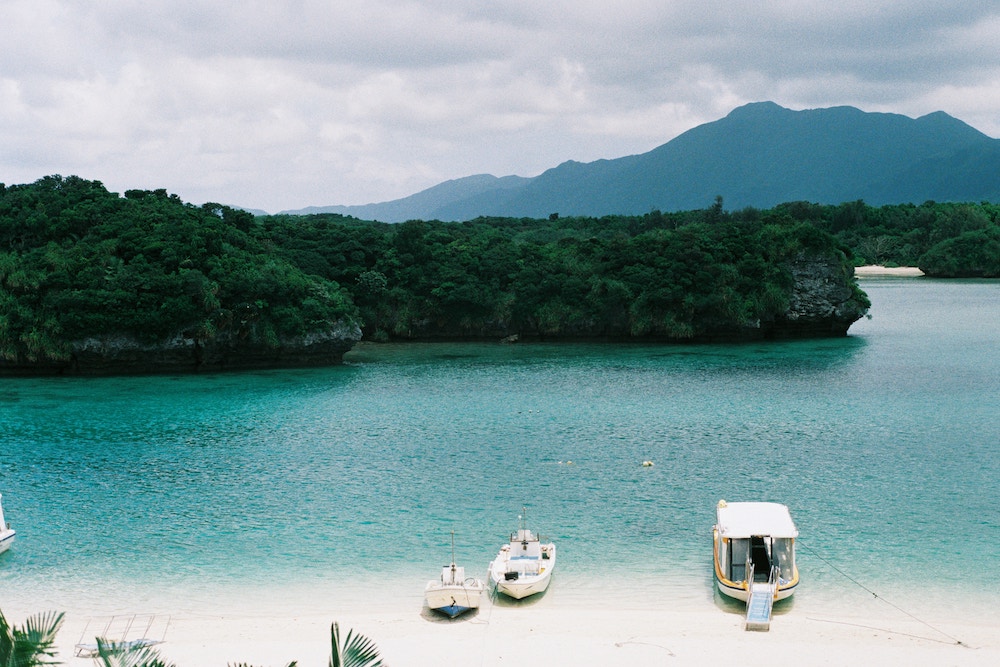
Located in the enchanting Yaeyama Islands of Okinawa, Ishigaki offers a tropical paradise that delights beach lovers and nature enthusiasts alike. To reach this idyllic destination from popular Japanese cities such as Tokyo or Osaka, travellers can take a direct flight to Ishigaki Airport for about 20,000 yen return. Once on the island, prepare to be mesmerized by its pristine white sandy beaches, turquoise waters, and vibrant marine life.
Personally, I went to Ishigaki for diving. The island is famous for its manta ray diving, but when I went, we couldn’t make it out there because of the weather. Even though we dove at the reefs closer to shore, it was still world-class. I even managed to see a white-tip shark! Talk about amazing!
Some other attraction on the island includes the limestone cave, an art park where hundreds of giant Okinawan shisa are on display, and the shows in the many music bars. Okinawa will always have a special place in my heart as the tropical paradise I go to when life in Kyushu gets a bit dull. Ishigaki promises a blissful escape from the ordinary, where the wonders of nature and the warm hospitality of the locals await to create memories that will last a lifetime.
Fukue, Goto, Nagasaki Prefecture
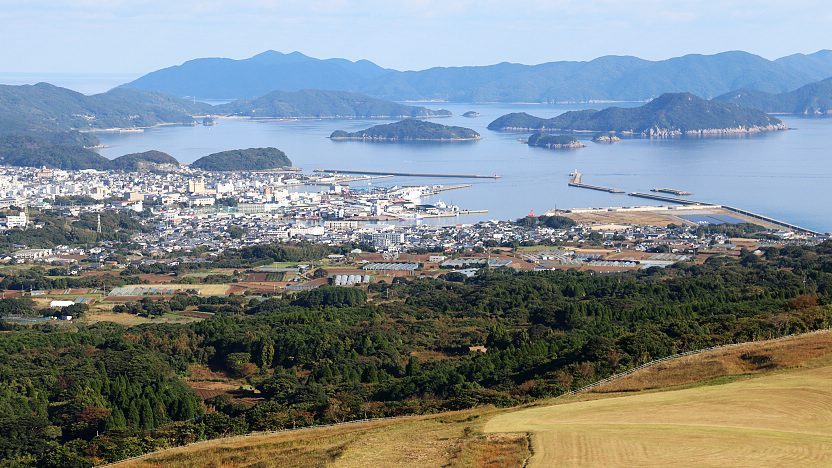
Nestled amidst the sparkling waters of the East China Sea, Fukue Island on the Goto Islands in Nagasaki Prefecture, where I live, offers a serene and culturally rich getaway that remains relatively undiscovered by mainstream tourism.
To reach Fukue from Tokyo, there are two main options for transportation. The most convenient choice is to take a domestic flight from Tokyo’s Haneda Airport to Nagasaki Airport, which typically takes 2 to 2.5 hours. From Nagasaki, a 2.5 to 3-hour ferry ride will bring you to Fukue Island. The ferry costs around 5000 yen each way.
Once on Fukue Island, you can explore a range of captivating attractions and activities. Start by visiting Fukue Castle, a reconstructed fortress that offers breathtaking panoramic views of the island. Dive into the island’s history by wandering through the Kaminato Old Town, where well-preserved traditional houses line narrow streets.
For beach lovers, Takahama Beach is a must-visit. Its pristine white sandy shores, crystal-clear waters, and picturesque surroundings provide the perfect setting for relaxation and various water activities such as swimming and snorkeling.
After a long day of activities, why not stumble into one of the yakiniku restaurants serving Goto Wagyu. It might be a relatively pricey meal compared to other offerings on the island, but I can promise it’ll be some of the best beef you’ll ever eat. What’s more, it’ll be a lot cheaper than eating the equivalent quality abroad. If beef isn’t your thing, you could try the local sushi or Goto udon.
If you go, don’t miss the opportunity to discover the charming fishing village of Nakanohama. Experience the daily lives of local fishermen and witness their traditional fishing practices. Engage in fishing or savor freshly caught seafood at local restaurants for an authentic culinary experience.
To unwind and rejuvenate, head to Goto Fukue Hot Spring. Immerse yourself in the soothing hot springs while marveling at the island’s natural beauty.
If you happen to visit Fukue during late July, you can witness the vibrant Goto Fukue Festival. This annual event showcases traditional parades, music performances, and awe-inspiring fireworks displays.
I can’t put into words how much I love Japan’s remote islands. Just go!





